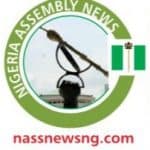NASS MOVES TO END FUEL SCARCITY MEETS IBE KACHIKWU AND STAKEHOLDERS
….Nass agrees on #185 per litre price
….Ibe kachikwu analysis root cause of PMS scarcity.
…..Other stakeholders calls for total deregulation of the petroleum downstream sector
The Senate committee on Petroleum Resources (Downstream) which was ordered by the President of the Senate, Dr Bukola Saraki on Thursday met with key Stakeholders in the Downstream sector.
The Senate committee headed By Senator Kabiru Marafa was told to cut short its Christmas and New Year recess and invite the Group Managing Director NNPC, Minister of Petroleum Resources and Major Marketers to explain what was responsible for the return of fuel queues across the country during the 2017 Yuletide period.
In a public Hearing held in room 022 of the Senate wing on Thursday, the Major Marketers Association of Nigeria, MOMAN, Depot and Petroleum Products Marketers Association, DAPPMA , the Nigerian National Petroleum Corporation, NNPC and the Minister of State for Petroleum Resources all had their versions for the fuel scarcity that hit Nigeria during last Christmas celebrations.
The Group Managing Director of the NNPC, Dr Maikanti Baru in his submission told the Senate Committee led by Senator Kabiru Marafa that the panic was sparked by a certain rumor in the social media that there will be an increase in the price of Petrol.
According to him this made marketers to desire to have products in order to create a windfall for themselves by buying at N145 per litre and selling at whatever price will be decided when a new price regime is put in place.
Dr Baru told the Senate Committee that there was a lot of diversion activities as a result of the development, what further crippled the situation according to Baru was the decision by the Union of Petroleum and Natural Gas Senior Staff Association, PENGASSAN to announce an impending strike action on the 18 of December 2017, this he said exacerbated the situation sending Nigerians to embark on panic buying.
Other factors pointed out by the NNPC helmsman include insinuations of a supply gap which was incentive for smuggling; Non Import by other Oil Marketing Companies and Smuggling which due mainly to price arbitrage.
The NNPC GMD also told the Senate Committee that prior to the crisis there was 1.9 million litres of fuel and three cargos was rejected and were immediately re-allocated to other DSDP supplies and the Consortia were penalized by not being allowed cargos for three months, October, November, December.
Thus there was no supply gap created by non-participant of the consortia as insinuated.
However to dispel any perception, additional cargoes (300 Million litres) were augmented.
Baru also revealed that several steps were taken by the NNPC to resolve scarcity; these steps according to him include the activation of a ‘ War Room’ where the situation was effectively monitored.
Additional imports to increase daily sufficiency (300 million litres)
24 hour operation in all NNPC Depot and Mega stations
Increased monitoring; surveillance and sanctioning.
Some of the problems noticed according to the NNPC GMD were that about 4,501 trucks did not return to complete be the Acquita process, they are expected to have been diverted.
Refineries were re-streamed at Kaduna and Port Harcourt.
The Minister of State for Petroleum Resources, Dr Ibe Kachikwu in his submission at the public hearing revealed the fact the Business Module of fuel supply in Nigeria is not what it should be.
His words “When the Price of Fuel escalates internationally, it has its own dynamic effect in terms of what happens here”
We need to have the refineries working, selling crude is a wrong model.
Other factors highlighted for the crisis by the Minister of State Petroleum Resources, Dr Kachikwu include issues of Diversion; logistic problems (bad road in Apapa); Lack of Sufficient Reserves; Supply Gap which Prompted Private Marketers to pull out, this according to him made the Ministry to look for emergency cargos; he also lamented that there was a lot of requests for logistic increases.
Ibe kachikwu also told the Senate Committee that Fuel at the International market is sold at the rate of $635.46, lighting expenses $15, NPA charges 0.84, NIMASA charges 0.22, Jetty Depot Charge 0.60, Storage Charge N2, your total Landing Cost before the other differentials I mentioned earlier is 151.75.
The Executive Secretary of major Marketers Association of Nigeria (MOMAN) Obafemi Olawore denied insinuations made by the NNPC GMD that the private sector especially his group did not start any rumor that the price of fuel would increase.
He told the Committee that government was owing the marketers N800 billion and several reconciliation have been done with the Ministry of Finance, the Chief of Staff to the President and other agencies
“We are working at staying at N145 per litre” Olawore stressed
He however sited instances where different state governments charge different ‘Wharf Landing Fees’ , he said for example some states charge 3 kobo, he said this will affect the price of fuel when marketers have to take products across fifteen states in the country.
Olawore called for the harmonization of Wharf Landing Fees so that the PPPRA can harmonize same on their template.
Some of the solution proffered by the MOMAN helmsman includes, addressing the supply shortage, giving major players major roles to play in the supply process.
He told the committee that all that was witnessed across the country are the symptoms and not the causes and it was due to the fact that supply was not enough.
He also called on the National Assembly to pass the Petroleum Industry Bill (PIB) and the Federal Government to deregulate the petroleum downstream sector to allow private sector players come in.
